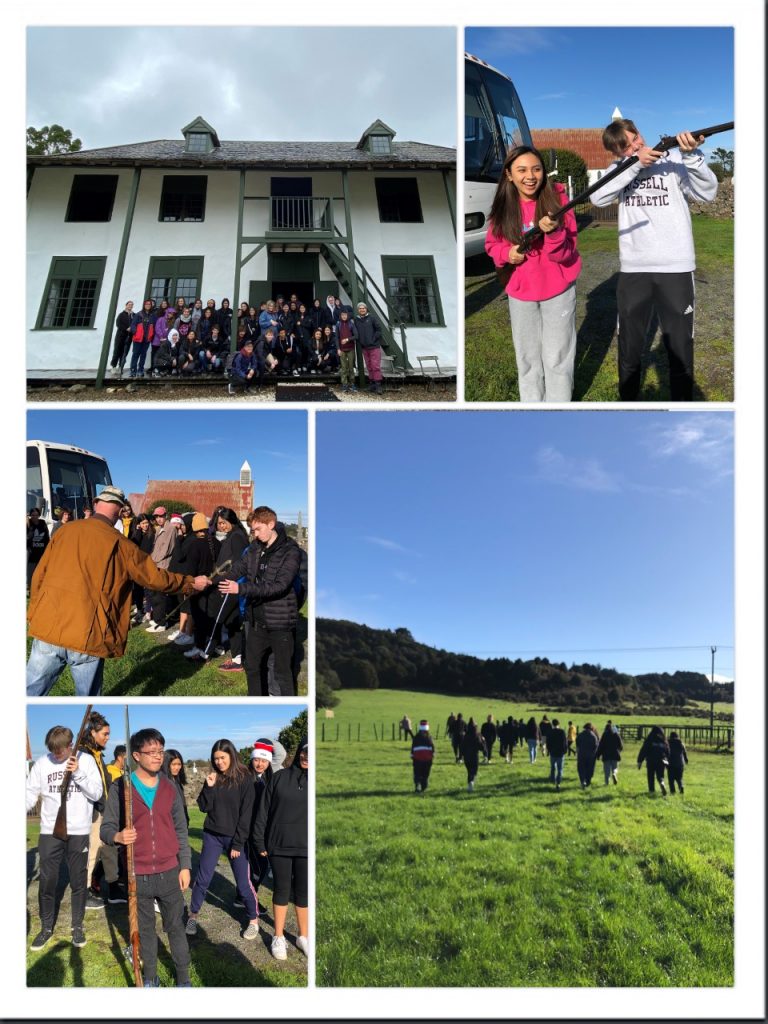Our Year 13 and year 12 History classes have been on a journey not only through the country but also through time on their trip to Northland. The purpose of the trip was to unravel the founding moments of the country that 5 million of us call home.
Along this journey, we met several people that were willing to give us their knowledge and expertise on these crucial moments, especially historian Kevin Ashcroft, who accompanied us throughout all three days of this trip.
On the first day, we went to the Stone House and a pa in Kerikeri. There we learned about the various pa that dotted the Northland landscape, and some of the interesting traditions that Northland Maori used to observe such as dumping the bodies of fallen warriors onto the riverbank so that they could retrieve the bones after the bodies decomposed to store them in caches. We also went to the Waitangi Treaty grounds to learn about how a few misinterpreted words were enough to start a war between the British and the Maori.
On the second day, we went to the town that gives us the name of our school’s Red House: Kororareka, now known as Russell. Over there, we learned about Maiki Hill, the hill that contained the flagstaff that was cut down four times by Hone Heke and his supporters, in protest at what they saw as the undermining of Maori sovereignty by the Crown, in contradiction of what they thought were the terms of the Treaty.
But by far the most interesting part of this day was seeing the bullet holes in a church resulting from the conflict that took place over there, and learning that the name Kororareka actually means “tasty blue penguin” in Maori! This was kind of hilarious and most unexpected!
But by far the best part of the trip was on the third and final day. In Ohaewai, we got to hold a brown bess musket, which is a massive gun with a bayonet attached. Using the guns given to us by Mr Ashcroft, we re-enacted the charge to the pa that took place near St Michaels church on the hill.
It was fun imagining ourselves being a soldier charging through the battlescape, but it was also chilling at the same time when you realise that they were running into the gaping jaws of death in a charge that took huge courage. To end this journey, we went to the Ruapekapeka pa, where one of the first instances of trench warfare took place. The British would eventually use the tactics of those defending the pa later in the First World War at Gallipoli and Paschendale.
When it was all over, we had to say goodbye to Mr Ashcroft. It was an emotional send off because throughout the trip, he had provided us with a great insight into how the conflict between British and Maori unfolded. We also learned a lot about him as a person, such as how the greenstone necklace he wore was a gift from his battalion after serving 40 years in the army.
Overall, the trip was a rollercoaster ride through the events that have shaped the soul of this country that we call home. Without this knowledge of our eventful past, we would have been oblivious to why New Zealand society functions in the way it does such as the overrepresentation of Maori in poverty. It stands to reason why humanity must understand history as it is its way of improving upon itself by building upon the successes and learning from the mistakes from the past. Without looking into our past, one can only expect humanity to be in a perpetual state of cultural and societal stagnation.
By Le Vinh Dang








